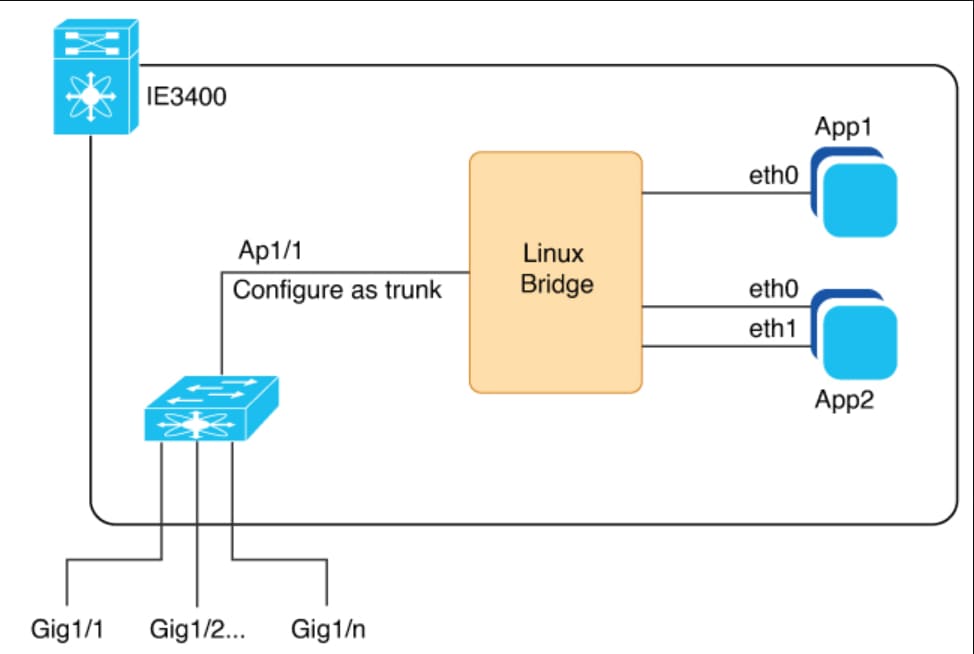Configuring the Network for IOx
Cisco Catalyst IE3400 Rugged, IE3400 Heavy Duty, and IE3300 Rugged Series Switches have an additional interface for connectivity to the IOx applications, called Ap1/1. You can configure the Ap1/1 interface as a regular, physical, interface in trunk mode.
You must configure a VLAN ID for the Ap1/1 interface even if the interface is configured in trunk mode. You also must configure an IP Address on an IE3400 VLAN interface where this VLAN is also a member of the Ap1/1 trunk interface.
The allowed VLANs on the Ap1/1 trunk interface should match the VLANs that need to carry data traffic to or from applications on IOx. These VLANs include ones carrying management traffic. The example used in this guide is 10. VLAN 10 is the VLAN carrying traffic for the application to communicate with the network. This traffic can include the IP traffic to the management VLAN. You should configure the same VLAN ID when managing the applications so the VLANs match. If you intend to use vlan 1 to communicate with the network, then choose a different native VLAN on Ap1/1.
After you configure the network, you must enable IOx on the switch.

The preceding illustration shows Ethernet and Layer 2 connections possible in an IOx network on a Cisco Catalyst IE3400 Rugged Series Switch. The dedicated interface AppGigabitEthernet1/1 for IOx support is internally connnected to a Linux bridge. The interface needs to be configured as a trunk. You can have multiple applications in an IOx network, each of which can have multiple Ethernet connections and can be placed in any VLAN.
For a similar illustration showing a sample network configuration, see the section Deploying IOx Applications Using the IOS-XE CLI in this guide.
Configure the VLAN ID for the IOx Interface
You must configure the VLAN ID for the IOx interface and then configure the SVI address for the VLAN. You do so to connect to and manage the VLAN. You must make sure that the VLAN is routable throughout the network.
SUMMARY STEPS
- Configure a VLAN ID for the IOx interface.
- Configure the SVI address for the vlan.
DETAILED STEPS
|
Step 1 |
Configure a VLAN ID for the IOx interface. Enter the following command: Example: |
|
Step 2 |
Configure the SVI address for the vlan. Example: |

 Feedback
Feedback